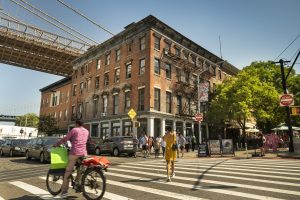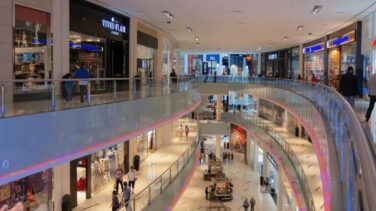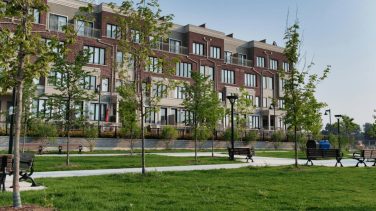 Gentrification. As communities around the country realize how serious our collective housing problem is, it’s a term we’re starting to hear more and more. While an increasing number of people with decision making power or influence, from elected officials to municipal leaders to developers, are realizing affordable housing is all too scarce, many residents are left apprehensive or even fearful, wondering if the efforts to add more housing could result in their displacement.
Gentrification. As communities around the country realize how serious our collective housing problem is, it’s a term we’re starting to hear more and more. While an increasing number of people with decision making power or influence, from elected officials to municipal leaders to developers, are realizing affordable housing is all too scarce, many residents are left apprehensive or even fearful, wondering if the efforts to add more housing could result in their displacement.
How would increasing the supply of housing, especially affordable housing, lead to gentrification?
How We Got Here
Much of the new development being seen throughout the country is sustainable, transit-oriented development, which is being encouraged at the federal, state, and local level through special programs, grants, and incentives. This type of development often involves the construction of compact, mixed-use communities located near public transit.
In many areas, the existing housing near public transit is low-income. This is for a variety of reasons, but to put it in very basic terms, for several decades the locations were simply undesirable to many. Middle and upper income residents left cities for the suburbs. Older, dated transit methods were seen as loud and dirty. It left little demand for housing close to transportation hubs, so prices fell. In some instances, these housing units were scooped up at low prices by people who became landlords that allowed their properties to fall into bad conditions.
Now we’ve had shifts in society that again make it desirable to live near transit hubs – more people choosing to live in cities rather than suburbs – and there have been updates to mass transportation. These projects are transforming low-income neighborhoods to accommodate and attract high-density, market-rate, mixed-use development. Although these projects can address blight, climate change, and grow the tax base, the results are often damaging for existing residents.
This increase in the supply of market-rate and affordable housing is especially challenging in high-cost-of-living cities where land and construction costs are high and there’s resistance to large-scale housing developments.
Giving the Community a Say
In the face of the affordable housing crisis, economic restructuring, increased cost of living, and growing income inequality, residents can often feel powerless and voiceless in planning and land use decisions. It’s a challenge to ensure that existing resident voices are represented and reflected in the decisions about the neighborhoods they live and work in.
Many residents in communities at risk of being gentrified find themselves struggling to be a part of the new economic and social transformation taking place in their neighborhoods. They want a seat at the table during the planning and development process. Some of the solutions to prevent gentrification need to be addressed with policy change, but developers can also play a big role through community engagement.
Much of the responsibility actually falls on the developers. A lack of conscious planning around supporting existing residents typically leads to development and revitalization efforts that result in substantial demographic shifts. Planning with a social justice framework just amplifies inequalities, placing heavier burdens on low-wage earners and the least educated, especially immigrants and marginalized people of color.
Thoughtful community engagement can help diverse resident populations better articulate their needs and help formulate the vision around economic, social, and environmental justice. To accomplish this, developers should engage residents from the earliest stages of planning to include residents’ voices in shaping the projects.
By engaging residents early, developers can address the factors that contribute to gentrification, including inadequate housing. Community engagement can also help put together creative community development strategies that include affordable housing, the creation of quality jobs, and investment in community programs and public education.
A Success Story
One example of a developer using community engagement to prevent gentrification is the Preservation of Affordable Housing (POAH), the organization developing the Garfield Park project on Chicago’s West Side, and a coUrbanize client. Since receiving the greenlight from the city in March of 2020, POAH has been conducting surveys and soliciting feedback from residents so community ownership of the development exists. As stated by Felicia Dawson, formerly vice president of housing for POAH and now their vice president of community partnerships, “If you’re bringing it to the neighborhood then people from the neighborhood should be the ones who get to use it.”


